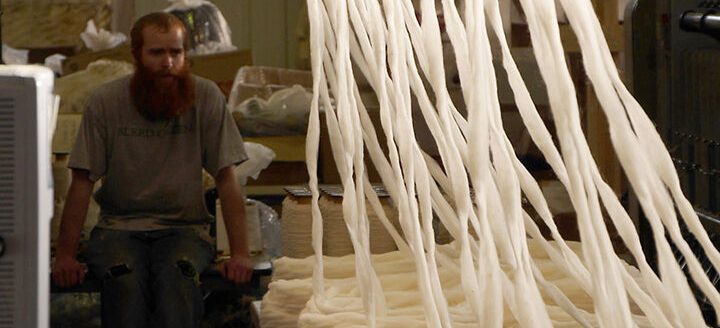Sheep prices steady, goats great amid uncertain market conditions
Texas sheep and goat producers are experiencing a mixed bag of good-to-stable prices amid increased market uncertainty as they get farther into 2020, according to Texas A&M AgriLife Extension Service expert.
Bill Thompson, AgriLife Extension economist, San Angelo, said goats and sheep were experiencing two markets beset by myriad factors, good and bad. Thompson recommends the new AgriLife Extension Lamb and Goat Market Forecast app to stay up to date on the latest price and market analysis.
“COVID-19 has not created any identifiable problems for meat and wool producers as of yet,” he said. “But there are certainly other marketing conditions that are aiding some prices and hurting others.”
Goat prices flying high
Texas’ goat prices have been “on fire” for several months, Thompson said. COVID-19 and the negative economic ripples it created have not unsteadied supplies, prices or demand so far.
The nation’s goat herd is up almost 2% to 2.09 million, compared to 2.06 million last year, Thompson said. Texas increased 3% during the same time to 765,000 head from 740,000 head.
The state’s largest sheep and goat market in San Angelo reported goat sale numbers were 10% higher than in 2019, he said. Even as sale numbers rose, so did prices.
“Prices went up an average of 4% this season,” he said. “Volumes are up and prices are up, and those typically don’t go up together. So, demand is obviously there.”
Kid and nanny prices in San Angelo were $289.40 and $148.07 per hundredweight, respectively, on March 18, Thompson said. Peak prices for those class goats were $267.47 and $133.96, respectively in 2019. For even more perspective on the rise of goat prices, kids were more than $101 per hundredweight higher this March than the average price per hundredweight in 2011.
Thompson said goat meat production may be insulated from any disruptions from COVID-19 because animals are not processed at large centralized facilities. These large facilities could face disruptions including sick workers or shutdown times for extra sanitization. However, multiple smaller operations are expected to fare better and stay on schedule.
“It remains to be seen what the impact to beef, chicken and other proteins’ production capacity could be, but most processing operations are running at capacity right now,” he said.
Wool sheep
Texas sheep producers face a bit more uncertainty and risks mostly due to other market factors so far, Thompson said.
Wool prices have been down for some time, especially compared to two years ago, he said. Wool production is still profitable, but producers face tighter margins due to labor costs and the availability of shearing crews.
“Wool took it on the chin last year,” he said. “The market lost all the gains from the two prior years. There is still money to be made, but it’s not even close to what it was.”
The trade war with China may have hurt the wool market because China is a major garment manufacturing hub, Thompson said. But the ongoing petroleum price war between Russia and Saudi Arabia added another negative market factor to the mix.
“As oil prices drop, it makes man-made materials, like rayon, more competitive with wool,” he said. “Manufacturers are doing amazing things with wool, but it makes it harder for clothing manufacturers to ignore man-made fabrics due to the price.”
Sheep and lamb market
In recent years, many Texas producers switched from Rambouillet sheep, which are a wool and meat producing breed, Thompson said, to meat-producing hair sheep like dorpers.
Meat prices are experiencing a better price situation, Thompson said. However, COVID-19 could become a market factor due to the amount of lamb consumed in restaurants.
“Lamb markets are more at risk, and we don’t know if that could fall into other sheep categories,” he said. “If carcass prices drop on Rambouillet lambs it will likely weigh on the price of hair sheep.”
Prices for feeder lambs in San Angelo were $197.03 per hundredweight on March 18, Thompson said. They averaged $166.16 per hundredweight last year.
Thompson said lamb has continued to grow in popularity beyond the traditional consumers. Many livestock producers have added sheep herds or switched from goats to sheep to diversify their operations.
“There’s a bit more uncertainty in the sheep market right now, and as we have seen, the markets hate uncertainty,” he said.


